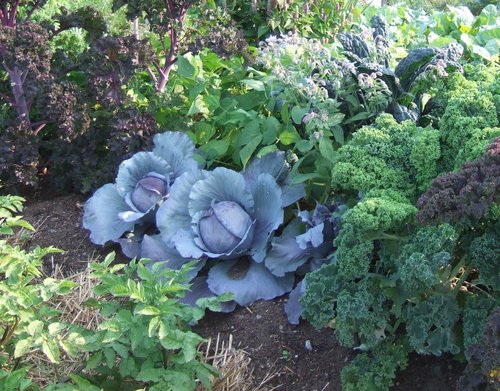Regenerative gardening focuses on biodiversity and working with nature to create a balanced habitat of interdependent plants and animals, from the fauna, fungi, and bacteria that live in the soil, to the insects and animals that we interact with day to day. To promote a healthy backyard ecosystem, we must seek to understand the natural cycles that are part of our world.
Growing food plants is itself an earth-friendly practice in that it eliminates “food miles,” and the carbon costs of producing and transporting food. Here are some ways to bring holistic management practices into the vegetable gardens:

Plant lots of flowers and herbs along with vegetables to create a healthy ecosystem. A diverse garden will have pests, such as aphids and cabbageworms. It will also attract pollinators, as well as lady beetles and parasitoid wasps that will help keep pests in check.
Compost kitchen and garden waste. Or, bury food waste and coffee grounds in the soil. Our food wastes are nourishment for soil biota, and composting keeps organic materials out of the landfills.
“Carbon sequestration is an important part of regenerative gardening. Plants absorb carbon dioxide and release oxygen into the air. When plants die, the organic matter creates food for microbes, which respire and release carbon dioxide back to the atmosphere. The carbon that is retained in the soil helps to give it its water-retention capacity, its structure, and its fertility. ”
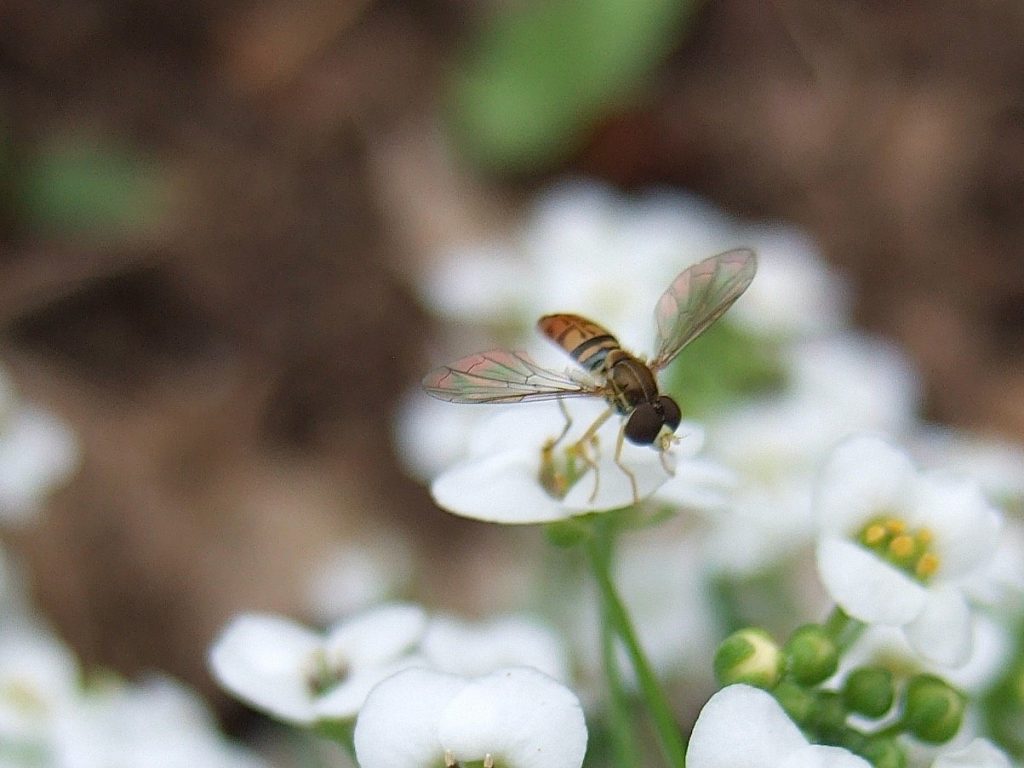
ANNUAL FLOWERS SUCH AS SWEET ALYSSUM, DILL, AND MARIGOLDS ATTRACT SYRPHID FLIES, PARASITOID WASPS, AND OTHER INSECTS THAT WILL HELP KEEP PESTS FROM RUINING YOUR HARVEST.
Plant a cover crop in your dormant season. “Green manure” crops are easy to grow even in small gardens or raised beds and offer multiple benefits. Keep the soil covered by living plants as much as possible to feel soil microbes and capture soil nutrients while preventing erosion and reducing weeds. Flowering cover crops, such as buckwheat and clover, also attract pollinators.
Disturb garden soil as little as possible. Growing food crops in permanent beds is a good idea for the simple reason that reduced foot traffic means the soil will not be compacted. Compaction restricts the movement of water, and soil disturbance of any kind affects the community of soil organisms.
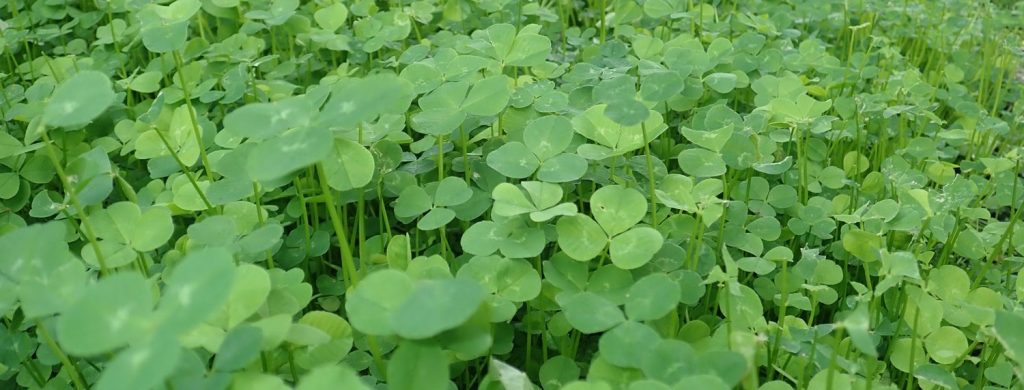
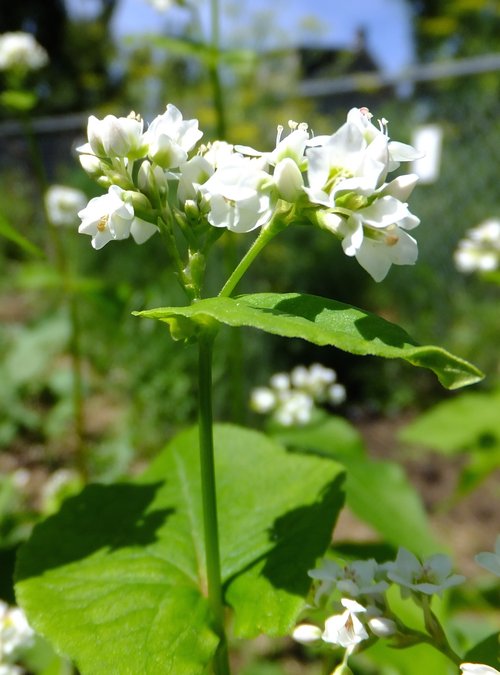
Leguminous cover crops, such as clover (left) and vetch, protect the soil from erosion and fix nitrogen for the benefit of the crops that follow. Buckwheat (right), a summer cover crop, attracts pollinators and mines phosphorus from the soil.
Avoid using pesticides and synthetic fertilizers. Pesticides kill not only target insects but affect non-target insects and animals as well, and can disrupt natural systems. Synthetic fertilizer production uses large amounts of fossil fuels, and studies have shown that its use depletes soil organic matter.
Invite birds and pollinators into your landscape. Sunflowers, black-eyed Susans, coneflowers, and other summer bloomers provide nectar for bees and butterflies as well as seeds for birds. Birds play a critical role in keeping insect populations in check in natural systems.
Use weed-free mulch from local sources to regulate and preserve soil moisture. A mulch layer also creates habitat for beneficial insects such as spiders and ground beetles, which feed on other insects and, in turn, become prey for small mammals and birds.
“Organic matter additions from mulch, cover crops, and compost feed the soil food web. The result: healthier, more productive plants!”
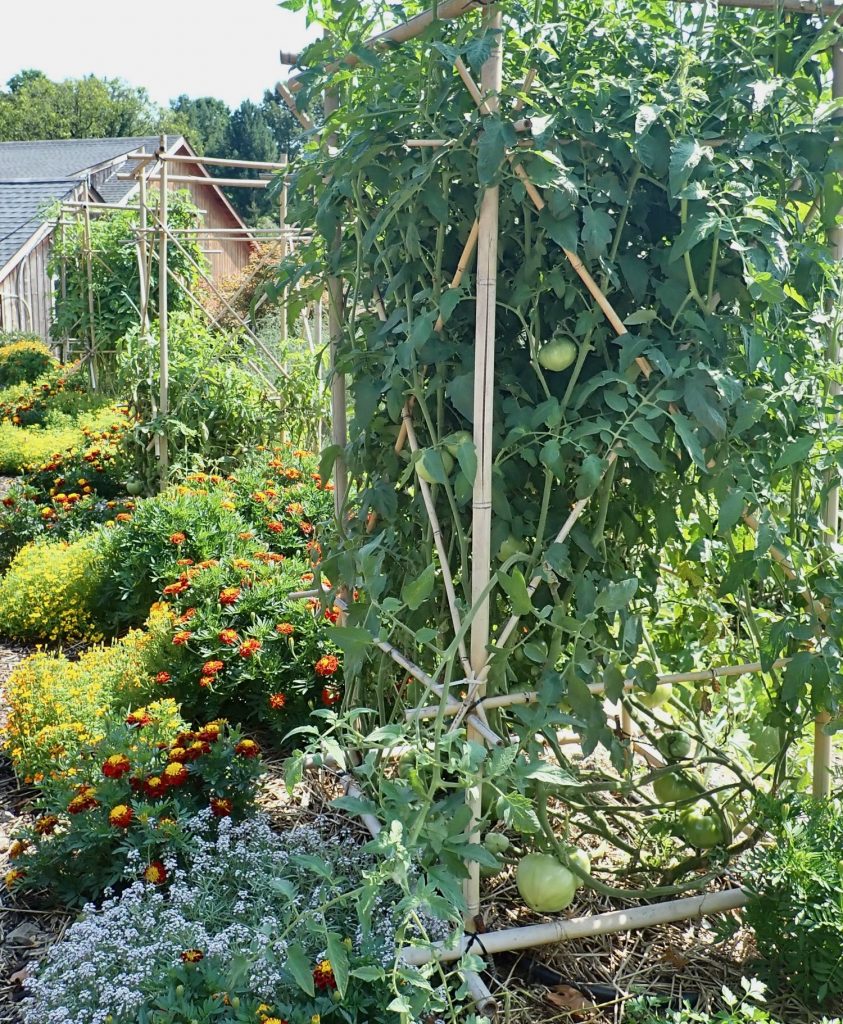
A DIVERSE GARDEN IS A HEALTHY GARDEN. INVITE POLLINATORS, BUTTERFLIES, PREDATORY WASPS, AND APHID-EATING LADY BEETLES AND SYRPHID FLY LARVAE INTO YOUR GARDEN BY INTERPLANTING FLOWERS AND HERBS WITH VEGETABLES.
Plant a cover crop in your dormant season. “Green manure” crops are easy to grow even in small gardens or raised beds and offer multiple benefits. Keep the soil covered by living plants as much as possible to feel soil microbes and capture soil nutrients while preventing erosion and reducing weeds. Flowering cover crops, such as buckwheat and clover, also attract pollinators.
Disturb garden soil as little as possible. Growing food crops in permanent beds is a good idea for the simple reason that reduced foot traffic means the soil will not be compacted. Compaction restricts the movement of water, and soil disturbance of any kind affects the community of soil organisms.
Avoid using pesticides and synthetic fertilizers. Pesticides kill not only target insects but affect non-target insects and animals as well, and can disrupt natural systems. Synthetic fertilizer production uses large amounts of fossil fuels, and studies have shown that its use depletes soil organic matter.
Invite birds and pollinators into your landscape. Sunflowers, black-eyed Susans, coneflowers, and other summer bloomers provide nectar for bees and butterflies as well as seeds for birds. Birds play a critical role in keeping insect populations in check in natural systems.
Use weed-free mulch from local sources to regulate and preserve soil moisture. A mulch layer also creates habitat for beneficial insects such as spiders and ground beetles, which feed on other insects and, in turn, become prey for small mammals and birds.
Boxes:
Carbon sequestration is an important part of regenerative gardening. Plants absorb carbon dioxide and release oxygen into the air. When plants die, the organic matter creates food for microbes, which respire and release carbon dioxide back to the atmosphere. The carbon that is retained in the soil helps to give it its water-retention capacity, its structure, and its fertility.
Organic matter additions from mulch, cover crops, and compost feed the soil food web. The result: healthier, more productive plants!
Annual flowers such as sweet alyssum, dill, and marigolds attract syrphid flies, parasitoid wasps, and other insects that will help keep pests from ruining your harvest.
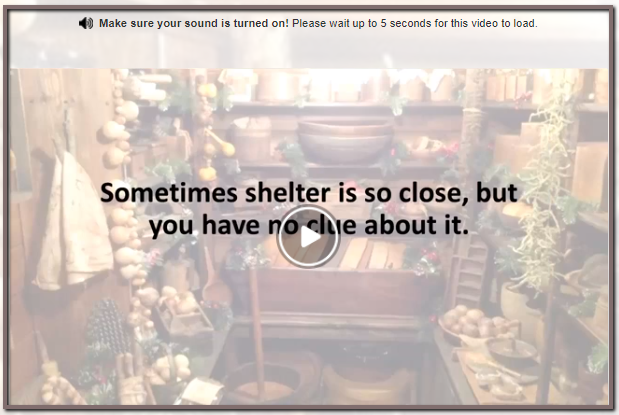
Leguminous cover crops, such as clover (above) and vetch, protect the soil from erosion and fix nitrogen for the crops that follow. Buckwheat (right), a summer cover crop, attracts pollinators and mines phosphorus from the soil.
A diverse garden is a healthy garden. Invite pollinators, butterflies, predatory wasps, and aphid-eating lady beetles and syrphid fly larvae into your garden by interplanting flowers and herbs with vegetables.
source : Home Garden

